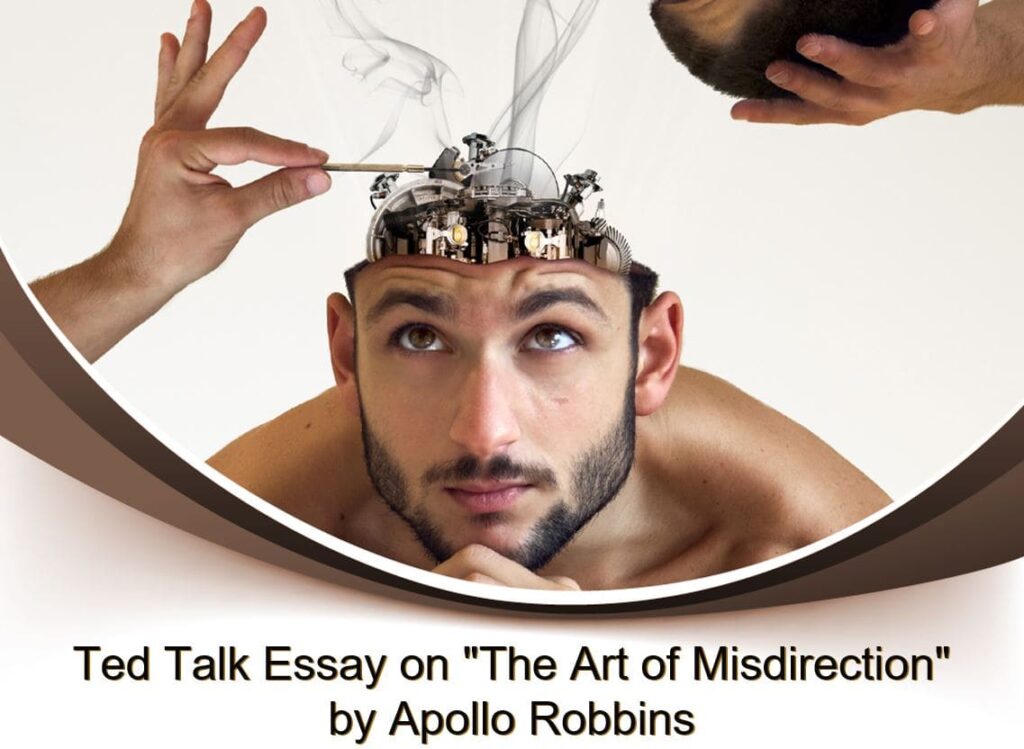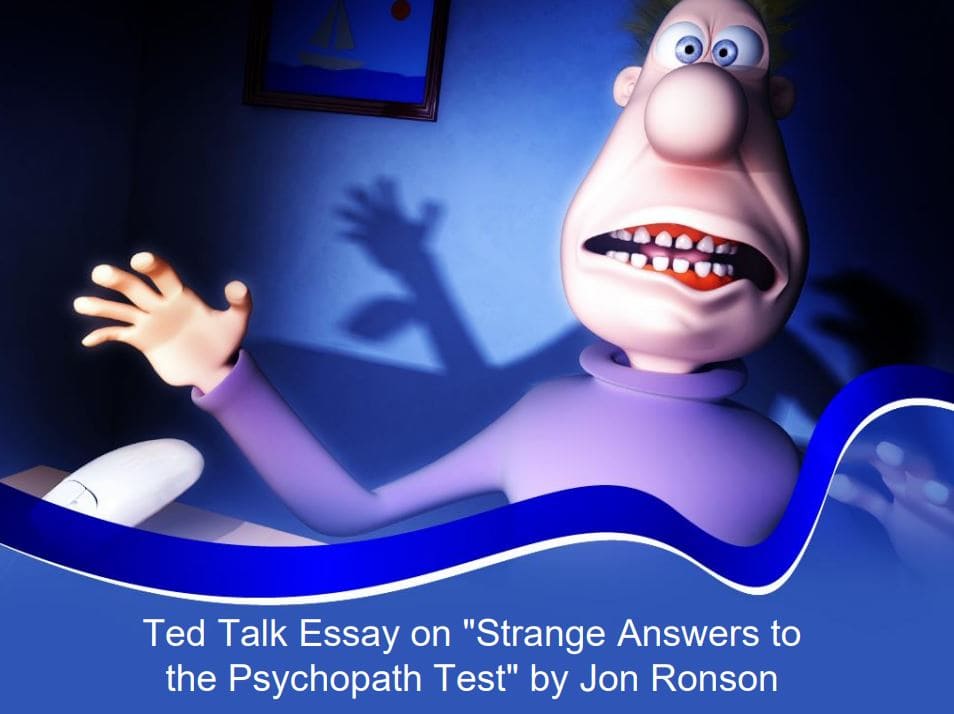In this Ted Talk essay on “The Art of Misdirection” by Apollo Robbins, human beings see many things daily but do not encode most details of these encounters into their memories. One reason is the lack of sufficient processing capacity in our easily distracted brains. However, by recognizing people’s problems with capturing attention, learning information prioritization, and then identifying and eliminating distractions, humans can utilize the information from Robbins’ talk to improve their focus.
The Main Theme of the Video
The human brain’s inability to multitask is the central theme of Robbins’ talk. Robbins posits that attention is a “limited resource” and opines that, if one can manipulate how others spend this resource, then it is possible to distract them (02:46-03:30). When people receive the new data, they stop thinking about what they were contemplating initially. Thus, if one is dealing with an important issue, the fresh data successfully derails these thoughts. Recognizing that people cannot multitask successfully is integral to securing themselves against manipulators who employ attention diverters to impair their focus.

Personal Experience
The magicians’ ability to confuse their audiences when pulling off tricks has always intrigued people, and many of them have attended several magic shows in an attempt to figure it out. Magicians performing tricks usually fool their viewers by redirecting their focus away from the trick to another area altogether (Tatler and Kuhn 699). Similarly, Robbins ensures that his victims’ focus is on something else, for example, his words, such that they fail to notice him pickpocketing them. Watching Robbins in action finally enabled people to understand how magicians use the manipulation and diversion of attention to execute their tricks.
Importance
Robbins’ video highlights the necessity of prioritizing important issues over sideshows. The human brain can process between 2 to 60 bits of information per second, but only a small portion of this information is cognitively usable at a particular time (Wu et al. 1). Humans are incapable of paying attention to everything simultaneously, and, when people have their attention captured by something, their focus on everything else stops. Thus, attaining people’s life goals depends on separating more important priorities from less important issues.
Applying the Information
The lesson on understanding the importance of misdirection is applicable to individuals struggling with a focus in their lives. Individuals can cultivate focus by putting aside any distractions that misdirect them from their goals (Tartakovsky par. 14). Distractions, whether physical or mental, can emanate from different sources. When studying for examinations, a ringing phone can be a distraction, and one may overcome it by switching off the phone. Misdirection can alienate individuals from their goals, and understanding it can help one to identify and eliminate potential distractors, enabling improved focus.
Surprising Fact
The one standout from the video was how easy it was to distract the human brain. Robbins describes attention as the “gateway to the mind” since it is what guides the human perceptions that determine our reality (02:25-02:30). Capturing a person’s attention enables one to control the way of thinking. That kind of power is incredible to contemplate, and, although Robbins is a highly skilled practitioner, the ease with which he was able to execute his tricks was still impressive.
Summing Up
Conclusively, it is evident that attention is the driving force behind the human brain’s functionality. Attention determines what people focus on and what they discard. Understanding human limitations in multitasking can help people to improve their focus. Recognizing that people are easily distractible and then identifying and eliminating the distractors enables them to prioritize matters and focus on important issues.
Works Cited
Robbins, Apollo. “The Art of Misdirection.” TED: Ideas Worth Spreading, June 2013, www.ted.com/talks/apollo_robbins_the_art_of_misdirection?language=en.
Tartakovsky, Margarita. “12 Foolproof Tips for Finding Focus.” Psych Central, 17 May 2016, psychcentral.com/lib/12-foolproof-tips-for-finding-focus#6.
Tatler, Benjamin W., and Gustav Kuhn. “Don’t Look Now: The Magic of Misdirection.” Eye Movements: A Window on Mind and Brain, edited by Roger P. Van Gompel, Martin H. Fischer, Wayne S. Murray, and Robin L. Hill, Elsevier, 2007, p. 697–714.
Wu, Tingting, et al. “The Capacity of Cognitive Control Estimated From a Perceptual Decision Making Task.” Scientific Reports, vol. 6, no. 1, 2016, pp. 1-11, doi:10.1038/srep34025.


